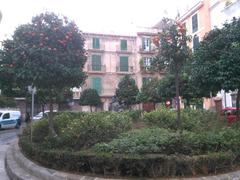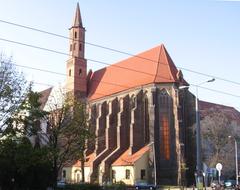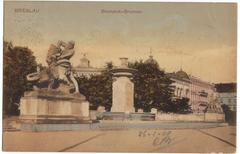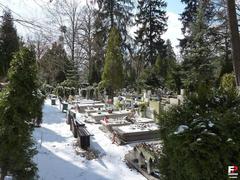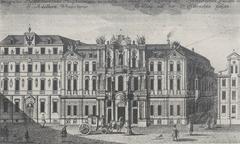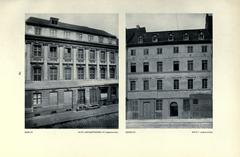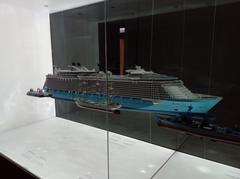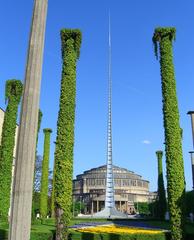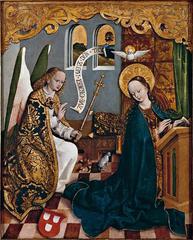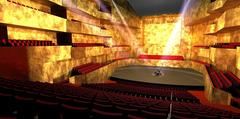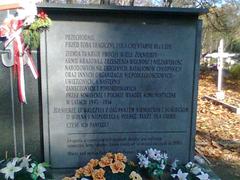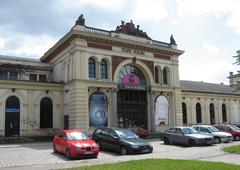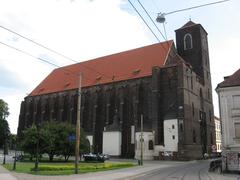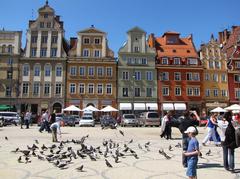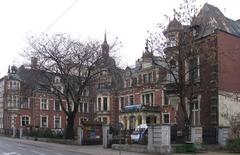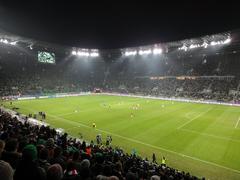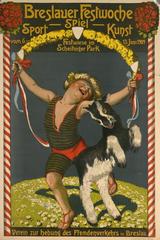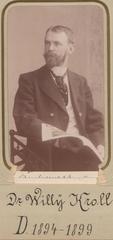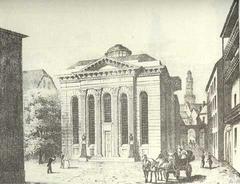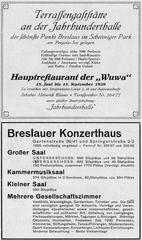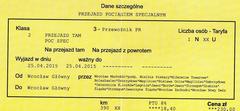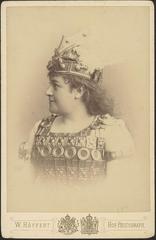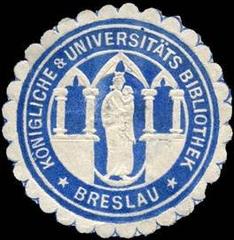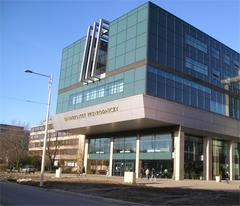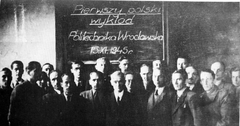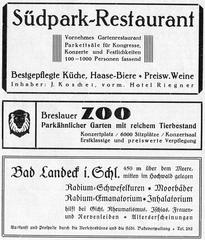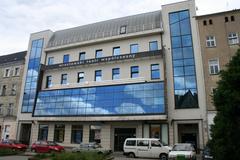Visiting Pionierów Wrocławskich Square: Hours, Tickets, and Tips
Date: 16/08/2024
Introduction
Welcome to a comprehensive guide on visiting Pionierów Wrocławskich Square in Wrocław, Poland. This central urban space is not just picturesque; it stands as a testament to the city’s rich and multifaceted history. From its medieval origins to its modern incarnation, Pionierów Wrocławskich Square encapsulates Wrocław’s journey through various historical epochs. Known historically as Breslau, Wrocław has been a significant settlement since the 10th century, experiencing numerous cultural and demographic shifts, particularly during periods of Polish, Bohemian, Habsburg, Prussian, and German rule (ENRS). The square itself symbolizes resilience and rebirth, especially following its extensive destruction during World War II and subsequent reconstruction during the communist era (In Your Pocket). Today, Pionierów Wrocławskich Square is a vibrant cultural landmark, hosting numerous historical buildings, museums, and events that reflect Wrocław’s dynamic cultural scene (Salt in Our Hair). This guide provides historical insights, practical travel tips, and essential visitor information to make your visit memorable.
Table of Contents
- Introduction
- Historical Background
- Visitor Information
- Travel Tips
- Nearby Attractions
- FAQ
- Conclusion
- Call to Action
Historical Background
Early History and Medieval Period
Pionierów Wrocławskich Square, located in Wrocław, Poland, is steeped in a rich historical tapestry dating back to the early medieval period. Wrocław, historically known as Breslau, was first mentioned in the 10th century and became a crucial administrative center under the Piast dynasty. By the 12th century, Wrocław was recognized as one of the principal royal headquarters, or “sedes regni principales,” as noted by the chronicler Gall Anonim (ENRS).
Magdeburg Law and Demographic Changes
In 1261, Wrocław was granted Magdeburg rights, a set of town laws that facilitated its development into a significant urban center. This legal framework attracted a diverse population, including Poles, Walloons, Jews, and Germans, marking a shift in the city’s demographic and cultural landscape (ENRS).
Renaissance and Baroque Periods
During the Renaissance and Baroque periods, Wrocław flourished as a cultural and economic hub under the Kingdom of Bohemia and later the Habsburg Monarchy. The square and its surrounding areas saw the construction of significant buildings, including churches and merchant houses, reflecting the prosperity of the time.
Prussian and German Rule
In the 18th century, Wrocław became part of the Kingdom of Prussia following the Silesian Wars. This period saw further urban development and industrialization. By the 19th century, Wrocław was a major city within the German Empire, known for its vibrant cultural scene and economic significance.
World War II and Post-War Reconstruction
World War II brought significant destruction to Wrocław, including Pionierów Wrocławskich Square. The city, then known as Breslau, endured a prolonged siege by Soviet forces. The aftermath saw Wrocław in ruins, with much of its historical architecture damaged or destroyed (ENRS). Following the war, Wrocław was incorporated into Poland, leading to a dramatic demographic shift and the beginning of its transformation from a German to a Polish city.
Communist Era and Urban Development
During the communist era, Wrocław and Pionierów Wrocławskich Square underwent significant reconstruction and development. The new administration focused on rebuilding the city and integrating it into the socialist state, often in the socialist realist architectural style (In Your Pocket).
Modern Era and Cultural Significance
Today, Pionierów Wrocławskich Square stands as a testament to Wrocław’s complex history. The square is a central urban space and cultural landmark, embodying the city’s historical transitions. It hosts numerous historical buildings, museums, and cultural institutions, offering insights into Wrocław’s past. The square also hosts various cultural events and festivals, reflecting Wrocław’s dynamic and diverse cultural scene (Salt in Our Hair).
Visitor Information
- Visiting Hours: Pionierów Wrocławskich Square is open 24/7, but specific attractions around the square may have varying visiting hours.
- Tickets: Entry to the square itself is free. However, some nearby museums and attractions may require tickets. It’s advisable to check their official websites for the latest information.
- Accessibility: The square is wheelchair accessible, and most surrounding attractions offer facilities for visitors with disabilities.
Travel Tips
- Best Time to Visit: The square is vibrant year-round, but the best times to visit are during spring and summer when the weather is pleasant, and various cultural events are held.
- Guided Tours: Consider joining a guided tour to gain deeper insights into the history and significance of the square and its surroundings.
- Photography Spots: The square offers numerous picturesque spots. Key photographic spots include the historical buildings, statues, and fountains.
Nearby Attractions
- Market Square (Rynek): Just a short walk from Pionierów Wrocławskich Square, Market Square is one of the largest medieval squares in Europe.
- Wrocław Cathedral: Located on Ostrów Tumski, the cathedral is a stunning example of Gothic architecture.
- Panorama of the Battle of Racławice: A unique cycloramic painting depicting the Battle of Racławice, located nearby.
FAQ
-
Q: Are there any special events held at Pionierów Wrocławskich Square? A: Yes, the square hosts various cultural events and festivals throughout the year, including music concerts, art exhibitions, and seasonal markets.
-
Q: Can I find guided tours in English? A: Yes, many tour operators offer guided tours in English. It’s advisable to book in advance, especially during peak tourist seasons.
-
Q: Is there public transportation available to Pionierów Wrocławskich Square? A: Yes, the square is well-connected by public transportation, including trams and buses. Check the local transit website for schedules and routes.
Conclusion
Pionierów Wrocławskich Square is more than just a public space; it is a living chronicle of Wrocław’s history. From its early medieval origins to its modern incarnation as a bustling urban center, the square encapsulates the city’s journey through time. For visitors, it offers a unique opportunity to delve into the rich historical and cultural heritage of Wrocław, making it an essential stop on any tour of the city.
Call to Action
Plan your visit to Pionierów Wrocławskich Square today! Download our mobile app Audiala for more travel tips and updates. Don’t forget to check out other related posts and follow us on social media for the latest news and events.
References
- Wrocław in the History and Memory of Poles, 2024, ENRS (source)
- Phoenix From the Flames: The Rebuilding of Wroclaw, 2024, In Your Pocket (source)
- Wrocław, Poland, 2024, Salt in Our Hair (source)
- A History of Wrocław, Poland, 2024, Local Histories (source)
- History of Wrocław, 2024, Wikipedia (source)
- Things to Do in Wrocław, 2024, The Crazy Tourist (source)
- Pioneers of Wrocław, 2024, TM Wrocław (source)
- Things to Do in Wrocław, 2024, Wroclaw Guide (source)


